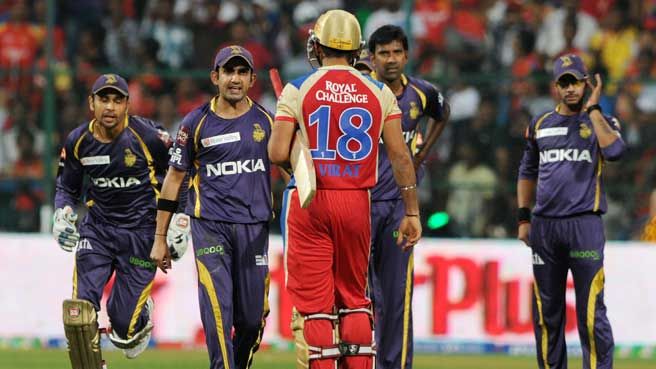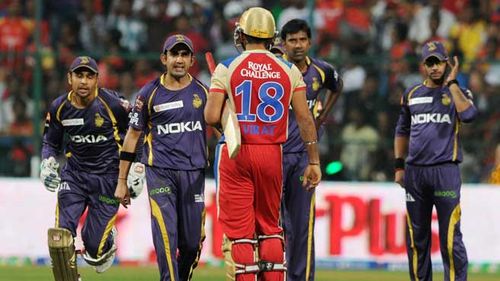
2014 IPL Player Auctions: A look at Kolkata Knight Riders' team strategy

KKR place trust in their captain Gautam Gambhir
If IPL 6 was all about ignominy, IPL 7 was all about revamping. Revamping such that the likes of which had never before been experienced in the ‘premier’ T20 domestic league.
The player auction for this year’s IPL, thus, revolved around a few core points namely:
- The budgetary mandate of INR 60 crores allotted per team to increase by 10% in the forthcoming IPL seasons
- The number of players from the previous year’s squad allowed to be retained by each team (maximum of five players)
- The ‘right to match’ cards available per team to match the winning bid for any player that the team wants in its squad but hasn’t retained
- Reduction in the total number of players in a team from 33 to 27 (18 Indian players and nine foreign players)
Though on the face of it these rules seemed simple enough, underlying their bold texts were the equally bolder sub-texts that made decision-making very challenging. Though each team was allowed to retain five players, exercising the option meant that the team could lose up to INR 39 crores from their salary purses for the maximum five players retained.Likewise with the ‘right to match’ cards.
While retaining players meant the budgetary purse of the team would automatically get reduced, potentially employing the ‘right to match’ card could have a lesser impact. The allotment of ‘right to match’ cards varied based on the number of players retained by the team. If a team retained no players, then the team would get three ‘right to match’ cards. If a team retained one or two players, then correspondingly it would get two ‘right to match’ cards, whereas if a team retained three to five players, it would get one ‘right to match’ card.
With these aspects outlining the plot of the player auction, each team came up with its own unique strategy. Some were brilliant, while some not so much. Some paid a bit too much leaving them with not much option on the second day of the player auction, while some saved the best for the last. The strategy and the corroborating fortune of Kolkata Knight Riders were somewhere in the middle, with just the right amount of caution and adventurousness thrown in.
Players Retained: Exercising prudence, KKR went to retain just two players – captain Gautam Gambhir and spinner Sunil Narine, which not only gave them the necessary bolstering before the auction began but also afforded them two ‘right to match’ cards in the process. But while the team’s choice to retain Gautam Gambhir cannot be faulted, the choice to retain Sunil Narine was indeed a doubtful one; for KKR have somehow, in the previous seasons, lacked in their batting department than their bowling.
‘Right to Match’ Cards Employed: With two ‘right to match’ cards available at their disposal, KKR once again played prudently buying back Jacques Kallis and Yusuf Pathan for INR 5.5 and 3.25 crores respectively. This was a straight-forward bargain considering that had KKR gone onto retain both these players, it would have meant KKR would have lost a combined figure of over 15 crores, leaving them with under 35 crores and still 22 players to make up their team.
The Remainder Stack-up: Though on first sight, the squad strength seems to be evened out, the problem with the numbers making up the Knight Riders’ squad strength is that the names of players are more disjointed and individualistic like Robin Uthappa, Umesh Yadav, Andre Russell, Piyush Chawla, to name a few, than provide a balance amongst all the three components.
There are a few players that KKR have re-purchased from their previous year’s squad like Ryan ten Doescathe, Manvinder Bisla, Shakib al Hasan and Debabrata Das. But, to be objective, barring Manvinder Bisla who proved to be a find in the opening, the remaining three players weren’t exactly outstanding for KKR in the previous. To take a risk on them again, thus, comes across as a gamble. Similarly with Australian bowler Pat Cummins who, while, is regarded to be a bowler with excellent potential is one of those prodigies whose career is troubled by fitness issues and injury worries. While the Knight Riders haven’t paid anything over Cummins’ base price (one crore) to purchase him, his inclusion in the final playing XI seems to be the proverbial sword of Damocles hanging over the Knight Riders’ heads.
Another interesting point is about the Knight Riders’ choice to retain Sunil Narine and put up Mohammad Shami onto the auction list. Considering Shami’s impressiveness in the international circuit, it could have been a better choice for KKR to retain Shami or employ a ‘right to match’ card for him rather than sell him outright.
Overall Verdict: Despite these minor conflicting aspects, by and large, KKR have undoubtedly done well. They were able to keep well within the budget and at the same time, purchased qualitative players – at reasonable prices without over-shooting themselves – with the ability to give them a chance to have a decent run at the IPL.